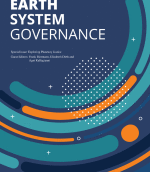Access to water has been recognized as an international human right at least since 2010, when both the United Nations General Assembly and the Human Rights Council adopted resolutions to this effect. The no significant harm principle can be found in the UN Watercourses Convention, and in numerous other global, regional, and watercourse-specific treaties. This paper provides an explanation of how the no significant harm principle and the human right to water supplement each other, by jointly protecting both the State and the individual from significant harm done, by another State, to a watercourse on which they depend. The dispute between Chile and Bolivia relating to the status and use of the Silala waters is used as a case study, to illustrate the way in which these two international legal regimes (international water law and international human rights law) supplement each other.
The no significant harm principle and the human right to water
Spijkers, Otto. 2020. The no significant harm principle and the human right to water. International Environmental Agreements.









